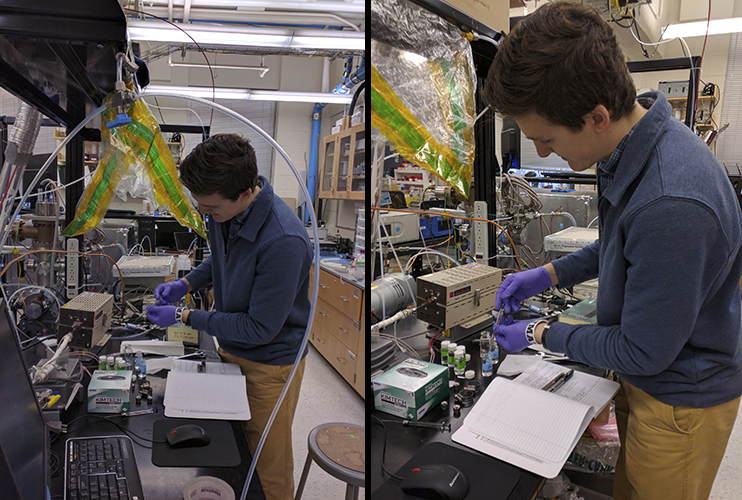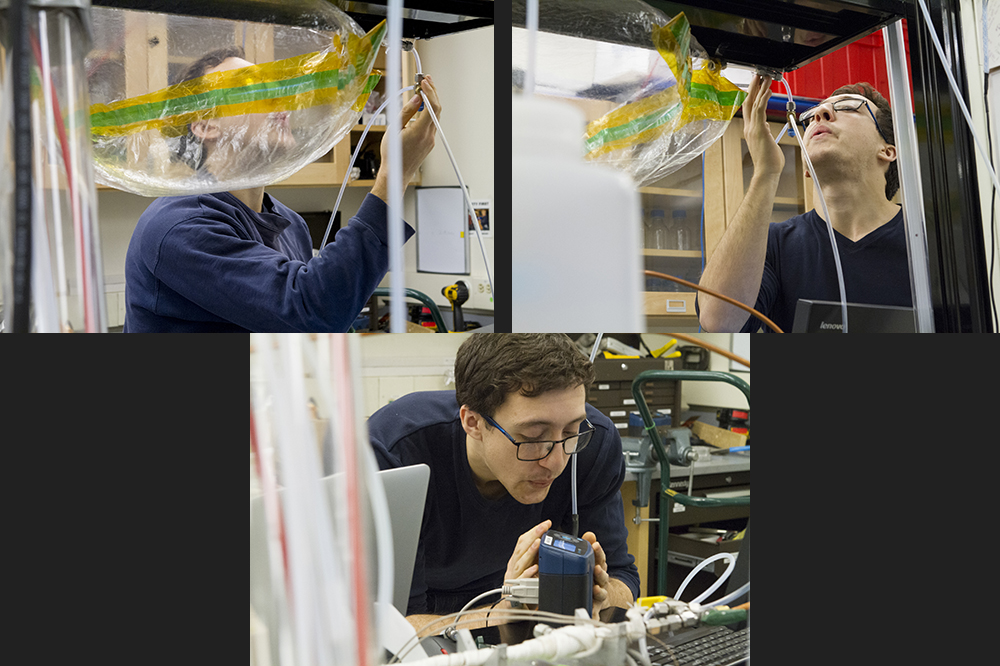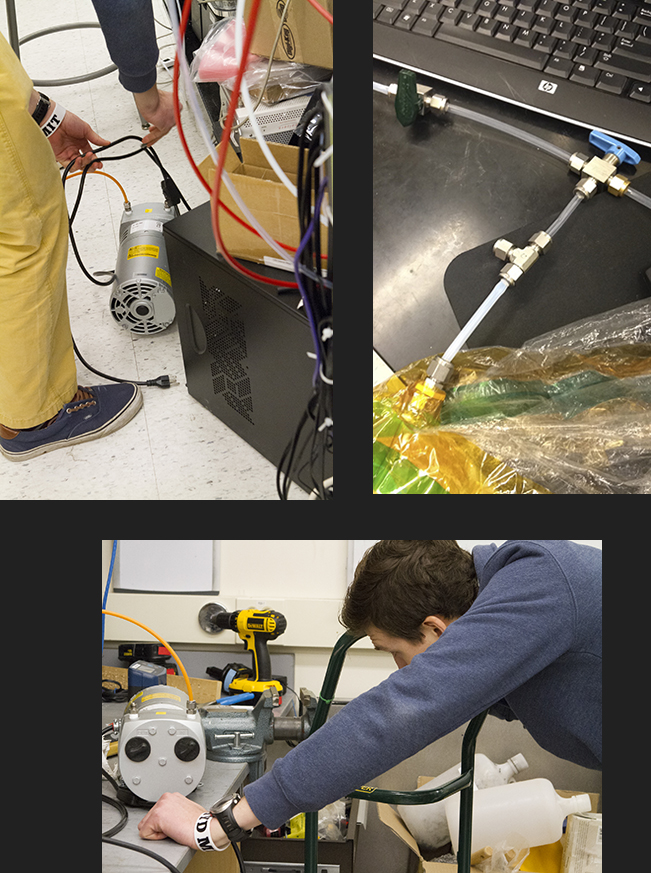Day in the life of a mini-UROP mentor and mentee: Josh and Stephen

[fusion_text]
Hi I’m Josh Moss and I’m a graduate student who works in Professor Jesse Kroll’s lab studying atmospheric chemistry, that’s me on the left.

Hi! I’m Stephen Duncan and I am a first year student interested in chemical and environmental engineering which brought me to the mini-UROP program in CEE.
Together, we are working on a research project to try to measure and account for the total amount of organic carbon in the MIT atmospheric chamber.
Take a look at one day in our shoes.
JM: We’re supposed to meet at Parsons Lab at 9:30 AM every morning, and at 9:27 AM I was feeling pretty confident that I was going to arrive on time….or pretty close to it. Taking snapchats probably doesn’t help me go faster.

SD: Unfortunately, Josh may have not been late, but I was early, but that meant I got first dibs on a morning essential, coffee.

JM: Once we were both caffeinated, it was time to get down to work. Our goal for today was to redesign and assemble a new part of the apparatus to replace a part that wasn’t working as well as it should have been. We were hoping to be at this stage of our research last week, but well, science rarely goes as planned.
SD: For our process, first we needed to find and attach a small bag. Here, I’m preparing the syringe to inject the organic solutions into the bag.

SD: Once all of the tubing is assembled, we are able to inflate the bag with low-concentration-CO2 air and inject the volatile organic compounds (VOC’s) used to calibrate our instrument.


JM: We’re filling the bag with various amounts of VOC’s. One of them, limonene is actually orange extract. After filling the bag, we began sampling the air inside it through our apparatus, noting differences between when the chemicals were being converted to CO2, and when they were not being converted.
SD: Unfortunately, we did discover there was a leak, so Josh showed me one of the cheapest and most effective methods of figuring out which valve was leaking…blowing on it!

JM: As it turns out, there was a leak at one of the instruments measuring flow into the bag. We realized we no longer needed it there, and so removed it from the system.
SD: Then to control our flow rate, we had to install a pump. Spoiler alert: it is a lot heavier than it looks…

JM: With our new setup, we were ready to get back to running experiments with the bag.

SD: And monitoring the data…

SD: Until, we blew a fuse due to our tubing heating tape, again.

JM: Stephen took off at 4, but I spent the remainder of the day doing small things at the lab until I ultimately left around 7:30 pm. Overall, it was a pretty successful day despite all of our setbacks.

SD: This mini-UROP course is a ton of fun because I am getting real, in-lab experience with a fun group of people. Each day brings a new set of challenges, but I enjoy working with Josh to figure out how to conquer them as we try to set up this measuring device.
JM: Research can be challenging and take unexpected twists and turns, but we can usually figure out ways to get over most hurdles we encounter. In the end, it’s all worth it if you contribute to the sum of human knowledge and help increase our understanding of how our planet works.
Thanks for following one day in our lives!
The mini-UROP program is a CEE initiative that pairs an MIT freshman student with a graduate student or postdoc during MIT’s Independent Activities Period (IAP). For class credit, the freshman student is exposed to valuable, hands-on research experience and ultimately present their research findings to an audience at the end of the term. For more information on undergraduate opportunities, click here.
[/fusion_text]

